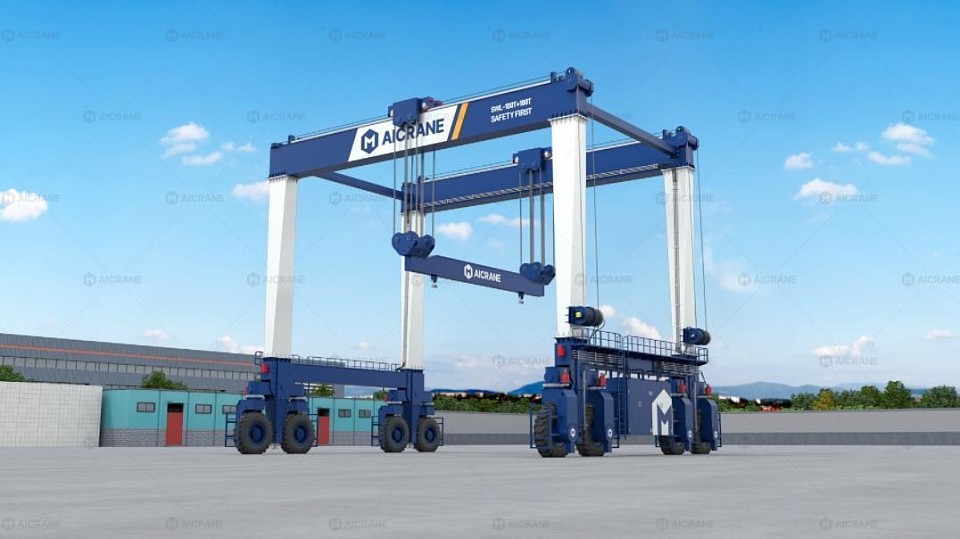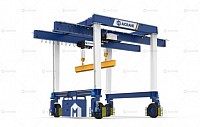Duty Classifications and Their Implications
Gantry cranes are indispensable in heavy industries, construction, and logistics, particularly when handling large and heavy loads. Among them, the 100-ton gantry crane is a popular choice for operations requiring high lifting capacity, durability, and efficiency. When evaluating the price of a 100-ton gantry crane, one of the most significant factors that often gets overlooked is working duty. Understanding how working duty affects the cost of a crane can help buyers make informed decisions and optimize their investment.
Understanding Working Duty
Working duty, also referred to as duty classification or crane duty, defines the operational frequency, load spectrum, and overall workload a crane is designed to handle. It essentially measures how intensively a crane will be used over its lifetime. According to international standards like ISO 4301-1 and DIN 15018, cranes are categorized into several duty classes, ranging from light to very heavy duty, each representing a combination of operating hours, load cycles, and load ratios.
For a 100-ton gantry crane, working duty is particularly critical because it influences the design specifications, materials used, and overall robustness of the crane. A crane with a higher working duty requires stronger structural components, higher-grade motors, and more advanced control systems, all of which drive up the cost.
Duty Classifications and Their Implications
The most common duty classes for gantry cranes are classified from M1 to M8 (according to DIN 15018) or A1 to A8 (according to ISO 4301-1). Each class specifies the crane’s capacity to handle cycles and loads per day:
M1 / A1: Very light duty, suitable for occasional lifting or workshop applications.
M3 / A3: Light to medium duty, appropriate for routine operations in factories with low lifting frequency.
M4 / A4: Medium duty, suitable for daily operations in warehouses or manufacturing plants.
M5 / A5: Heavy duty, common in steel plants, shipyards, and logistics hubs.
M6 / A6 and above: Very heavy duty, used in environments with continuous lifting cycles, high loads, or harsh working conditions, such as precast concrete yards or mining operations.
When purchasing a 100-ton gantry crane, selecting a higher working duty class means that the crane must withstand frequent cycles of heavy lifting. This requires a sturdier girder, reinforced wheels, higher capacity motors, and more robust braking and safety systems. Naturally, all these upgrades directly impact the 100 ton gantry crane price.
Material Selection and Structural Design
One of the first cost implications of working duty is material selection. A crane rated for higher duty requires high-quality steel with superior tensile strength to handle repeated heavy loads. For example:
Light-duty cranes may use standard structural steel with moderate thickness.
Heavy-duty cranes require high-strength steel with thicker girders, reinforced connections, and extra bracing to prevent fatigue and deformation.
The structural design also adapts to duty class. For higher duty cranes, engineers often increase the size of the main girder, enhance the rigidity of the end trucks, and optimize the design of joints to distribute stress evenly. All these modifications increase the amount of raw material and labor required for manufacturing, contributing to a higher purchase price.
Motor and Mechanical Component Upgrades
Working duty impacts not only the structure but also the mechanical and electrical components of a gantry crane. Key areas affected include:
Hoist motors: Higher duty cranes require motors that can handle longer operating hours, heavier loads, and frequent start-stop cycles. These motors are usually more powerful and feature advanced cooling systems to prevent overheating.
Trolley and bridge drives: For cranes operating in continuous cycles, variable frequency drives (VFDs) or advanced gear systems are often recommended to reduce wear and improve energy efficiency.
Braking systems: Heavy-duty operations demand fail-safe brakes capable of handling frequent stops under full load. Multiple braking stages or dynamic braking systems may be implemented.
Wheel and rail systems: Gantry cranes with higher duty cycles require reinforced wheels, improved bearings, and hardened rails to reduce wear and maintenance costs.
Upgrading these components for higher duty cycles ensures reliability and longevity but increases the initial investment significantly.
Safety and Control Systems
Higher working duty also influences the safety and control features of a crane. For cranes operating under heavy and frequent loads, manufacturers often incorporate:
Overload protection systems to prevent lifting beyond rated capacity.
Anti-sway and load positioning controls to ensure precision and reduce the risk of accidents.
Automated monitoring systems to track operational parameters, detect faults, and schedule preventive maintenance.
Enhanced operator cabins and ergonomic controls to support long-duration operations.
Integrating these advanced systems adds cost but is essential for high-duty applications where failure could result in expensive downtime or safety incidents.
Maintenance Considerations
Working duty also indirectly impacts price through maintenance requirements. High-duty cranes are subjected to greater mechanical stress, which necessitates more frequent inspection and maintenance. While preventive maintenance can extend service life, it is also factored into the initial design and material selection. Manufacturers often recommend using higher-quality components and better lubrication systems for high-duty cranes, which raises the upfront cost but reduces long-term downtime and repair expenses.
Application Examples
Understanding working duty is crucial because it ensures that the crane matches the operational demands of its intended application. For instance:
Steel mills: A 100-ton gantry crane used to move steel coils multiple times per hour would require a heavy-duty M5 or M6 classification. The cost is higher due to reinforced structure, upgraded motors, and advanced control systems.
Shipyards: Cranes lifting prefabricated ship sections frequently and under outdoor conditions need high-duty classification with corrosion-resistant materials, increasing the price of gantry crane.
Warehouse or light manufacturing: If the crane is used occasionally for moving 100-ton loads, a lighter-duty classification can be chosen, reducing material costs, motor size, and safety systems.
Selecting the appropriate working duty ensures that the crane is not over-engineered or under-engineered, optimizing cost and performance.
Impact on Price
While prices vary depending on manufacturer, region, and additional specifications, working duty can account for a 15% to 40% difference in the cost of a 100-ton gantry crane. A crane designed for M3 duty (light to medium use) may be significantly cheaper than one rated for M6 or M7 duty, which includes more robust structural elements, motors, safety systems, and control features.
It is important for buyers to provide accurate operational details to manufacturers, including expected lifting frequency, load variations, and operating environment. Overestimating duty can lead to unnecessary expenses, while underestimating it can result in early wear, higher maintenance costs, and potential operational failures.
Conclusion
Working duty is a critical factor influencing the price of a 100-ton gantry crane. It determines the crane’s structural requirements, mechanical and electrical components, safety systems, and maintenance needs. Understanding duty classification allows buyers to select the most cost-effective crane that meets their operational demands without compromising safety or longevity.
Investing in the right working duty ensures reliable performance, longer service life, and lower operational risks. While a higher-duty crane may come with a higher initial cost, it pays off through durability, reduced downtime, and improved safety. For anyone considering a 100-ton gantry crane, evaluating working duty alongside load capacity, span, and operational environment is essential to making an informed and financially sound decision.


